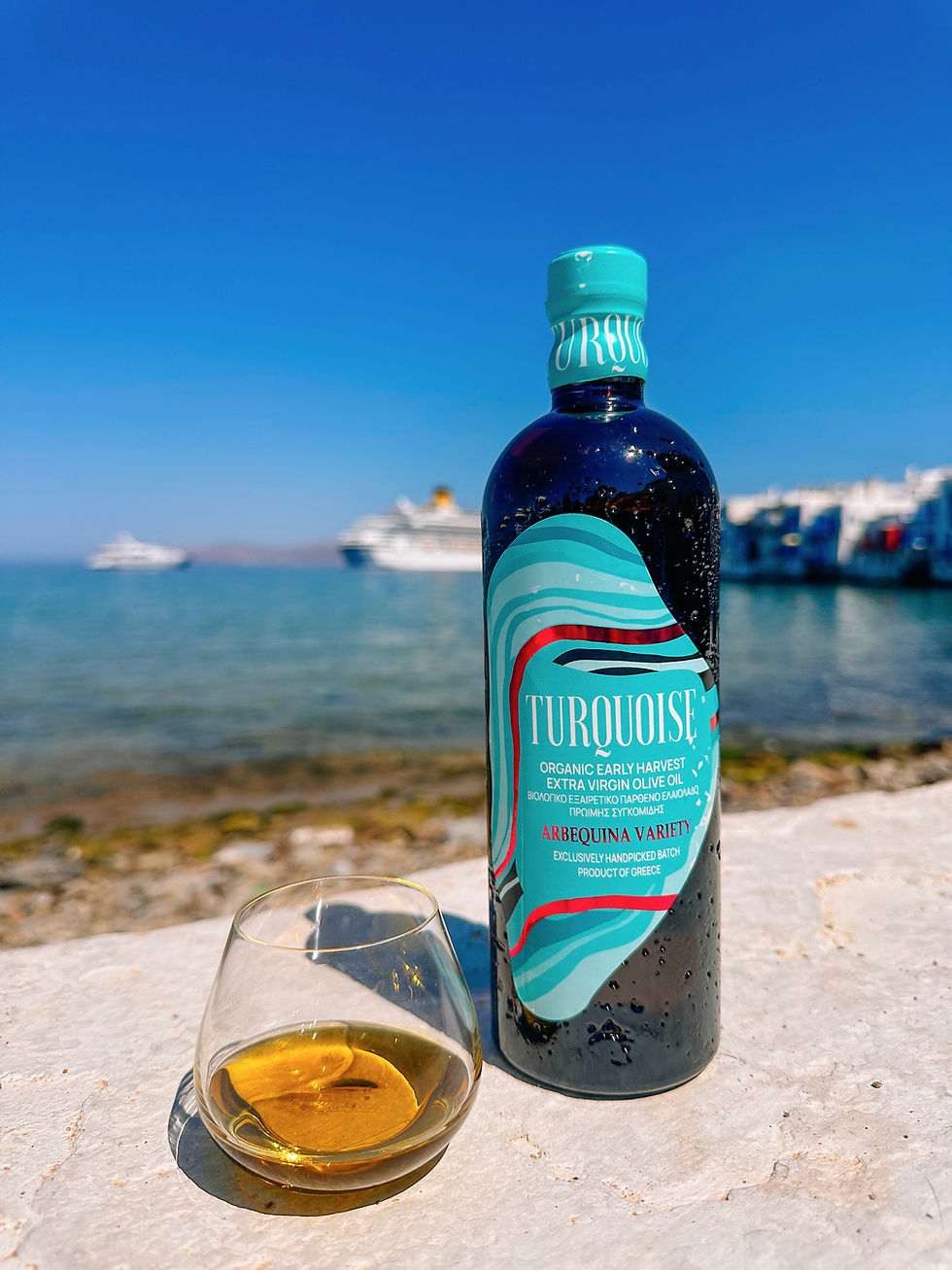Prickly Pear, so scary but yet so tasty!
- Mykonos Olive Oil Tasting

- Aug 25, 2022
- 3 min read

What’s the first fruit that comes to mind when you think of Greece? Chances are you thought watermelon, right? Perhaps the fig or pomegranate. We do have both these fruits in abundance as well as the sharon fruit which grows in the coldest months in the highest snow-capped mountain villages. Foreigners often associate Greece with heat, especially our famous summer sunshine, and forget or don’t know that Greece is very diverse in terrain and weather. From lush green mountains to deserts, our climate cultivates a large variety of fruit species, none more curious than the Greek Prickly Pear, the Fragosyko, a descendent of the Cactus Pear originally from Mexico that has become a Greek national favorite, and it is widely recognized as a superfruit too!
As climate change takes us towards a hotter world, the cactus, in general, could become a key part of many regions’ diets, providing food in areas of desertification. Furthermore, there are labs such as the University of Nevada’s, researching how cactus fruit could be the source for new biofuels. The research underway is designed to bring solutions for the future of agriculture, according to projections that the planet will need to produce 50% to 90% more food by 2050.

With over 200 varieties worldwide and a wealth of nutritional benefits, the Opuntia ficus (its Latin name) whether yellow, white or pink, its fruits and its leaves are rich in antioxidants, fighting inflammation and offering a range of benefits. They are in bloom from late May, and ripe for picking from August to October. In the southern and rocky parts of Greece, you will meet many prickly pear plants, especially the Cyclades, and our rocky island of Mykonos, is covered in them!
Grabbing one from the plant and peeling it is not easy because they are covered in thorns.
They require a special technique to pick them from the plant but also to peel them in order to enjoy them.
I have learned this technique from my mom and she from her mother (in Kalamata my mom's homeland, prickly pear plants are everywhere and they are the favorite fruit of the locals, after the figs of course!) and I would love to share it with you because I believe it is a pity not to enjoy this delicious superfood when you find yourself in Greece.
Watch our video on how to handle them as it does take a little skill. Take it from those who have learned the hard way!
Prickly as it is on the outside, it stores all the best properties you could hope for on the inside. This is why you should open one up and gorge on their goodness:
It’s a miracle digestive. With a high concentration of soluble fiber, on consumption it produces a gel in the gastrointestinal tract, promoting excellent bowel movement and even easing IBS (irritable bowel syndrome) according to a 2020 human study.
It can help regulate blood sugar levels, therefore reducing the risk of Type II Diabetes. The high concentration of fiber (present especially in the cactus pad rather than the fruit) slows the absorption of glucose into the bloodstream, avoiding spikes in sugar levels.
Carotenoids, vitamin C and other antioxidants are abundant in the cactus pads, combat oxidative stress and cellular damage by free radicals, preventing heart disease in the long term while promoting collagen production in the short term. An anti-aging bonus!
Hydration hydration hydration! As a desert fruit, the prickly pear stores all the water it can, and along with the H20, it contains masses of potassium, calcium, sodium and magnesium, the best electrolytes for hydrating the fluid in and around your cells.
How do you consume them? Well in Mexico “Nopalitos” are leaves sliced into strips, skinned, and fried with eggs served as breakfast. There are so many ways to enjoy them!
Here in Mykonos, our local brewery MIKONU has created a unique beer and it’s delicious! The secret is that you must know how to open them if you’re going to consume them at home. Did you know that you can enjoy them with EVOO?!

Watch our video on how to prick, open, and drizzle them in the right Extra Virgin Olive Oil! I have used Tsounati variety, organic EVOO by Pamako from Chania, Crete because its aromatic profile, the bitter and spicy taste balances the sweetness of the prickly pear taking the whole flavor to another level!
Want to surprise your taste buds? Try the recipe in our video and leave us a comment!




Comments